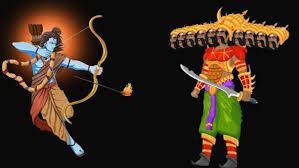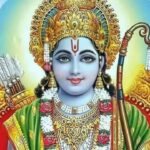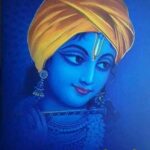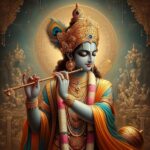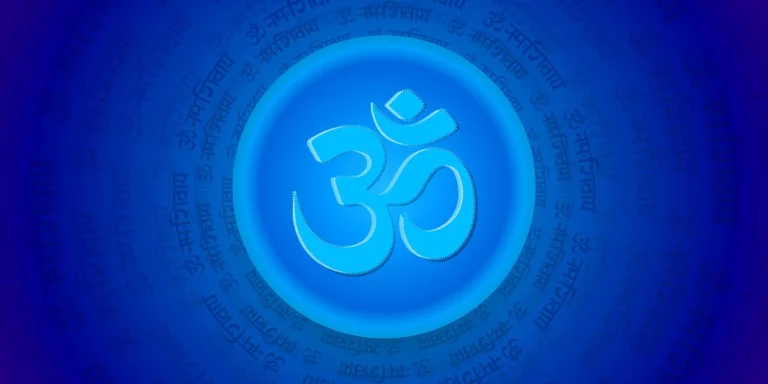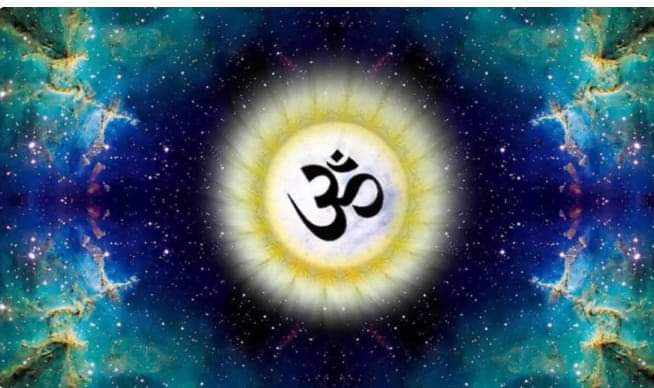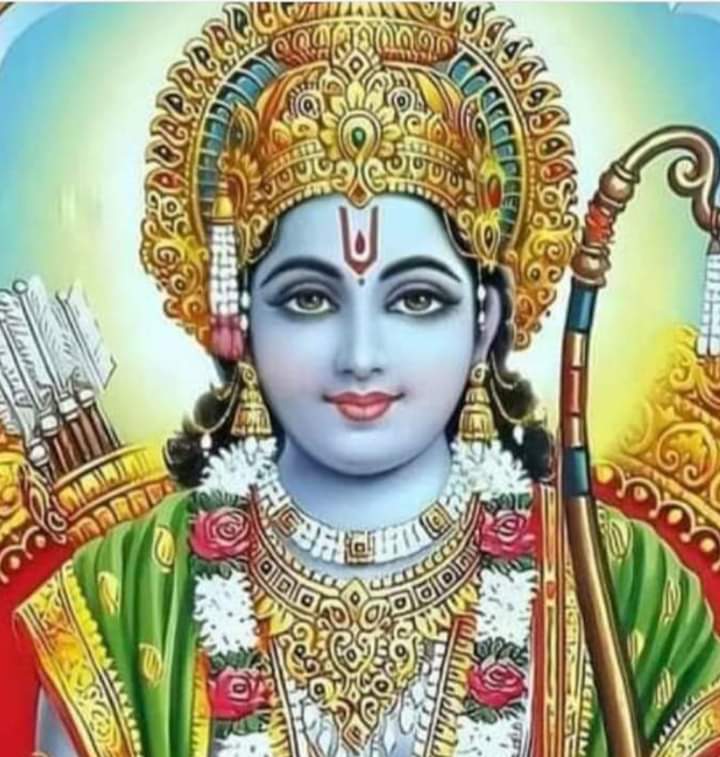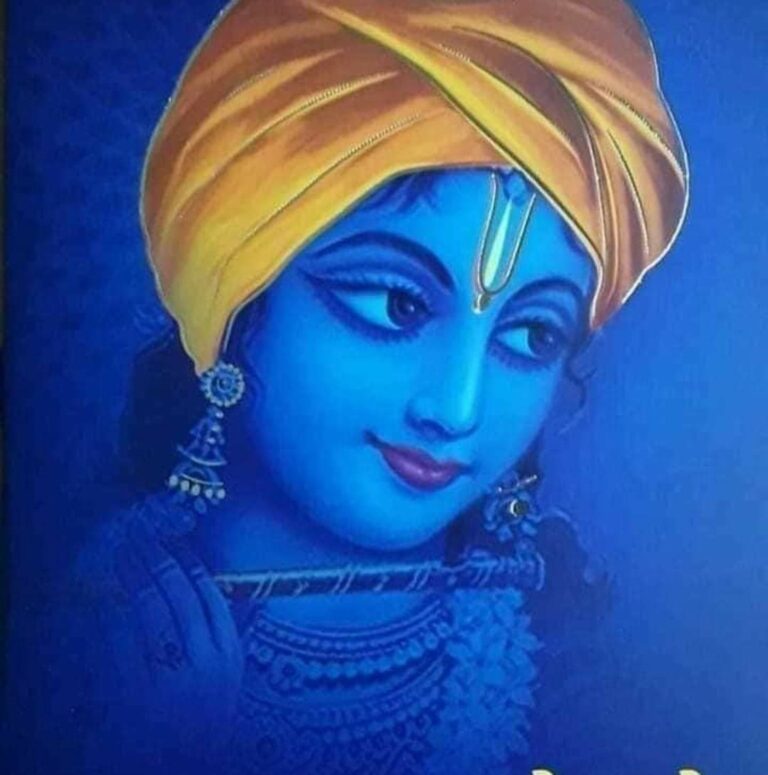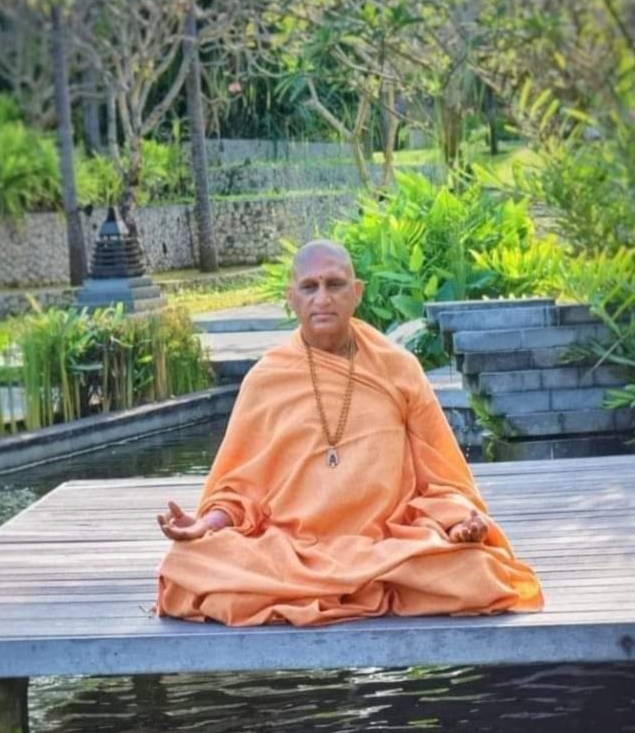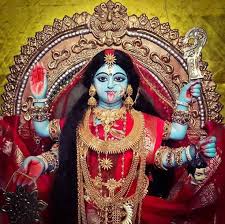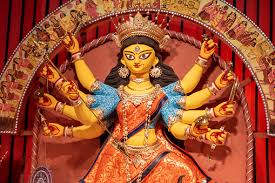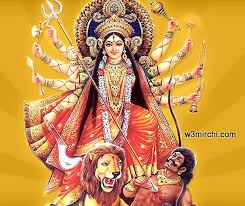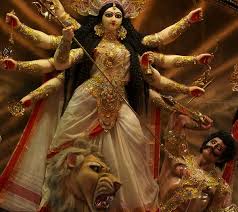दशहरा (विजयादशमी व आयुध-पूजा) हिन्दुओं का एक प्रमुख त्योहार है। अश्विन (क्वार) मास के शुक्ल पक्ष की दशमी तिथि को इसका आयोजन होता है। भगवान राम ने इसी दिन रावण का वध किया था तथा देवी दुर्गा ने नौ रात्रि एवं दस दिन के युद्ध के उपरान्त महिषासुर पर विजय प्राप्त की थी। इसे असत्य पर सत्य की विजय के रूप में मनाया जाता है। इसीलिये इस दशमी को ‘विजयादशमी’ के नाम से जाना जाता है (दशहरा = दशहोरा = दसवीं तिथि)। दशहरा वर्ष की तीन अत्यन्त शुभ तिथियों में से एक है, अन्य दो हैं चैत्र शुक्ल की एवं कार्तिक शुक्ल की प्रतिपदा।
इस दिन लोग शस्त्र-पूजा करते हैं और नया कार्य प्रारम्भ करते हैं (जैसे अक्षर लेखन का आरम्भ, नया उद्योग आरम्भ, बीज बोना आदि)। ऐसा विश्वास है कि इस दिन जो कार्य आरम्भ किया जाता है उसमें विजय मिलती है। प्राचीन काल में राजा लोग इस दिन विजय की प्रार्थना कर रण-यात्रा के लिए प्रस्थान करते थे। इस दिन स्थान-स्थान पर मेले लगते हैं। रामलीला का आयोजन होता है। रावण का विशाल पुतला बनाकर उसे जलाया जाता है। दशहरा अथवा विजयदशमी भगवान राम की विजय के रूप में मनाया जाए अथवा दुर्गा पूजा के रूप में, दोनों ही रूपों में यह शक्ति-पूजा का पर्व है, शस्त्र पूजन की तिथि है। हर्ष और उल्लास तथा विजय का पर्व है। भारतीय संस्कृति वीरता की पूजक है, शौर्य की उपासक है। व्यक्ति और समाज के रक्त में वीरता प्रकट हो इसलिए दशहरे का उत्सव रखा गया है। दशहरा का पर्व दस प्रकार के पापों- काम, क्रोध, लोभ, मोह मद, मत्सर, अहंकार, आलस्य, हिंसा और चोरी के परित्याग की सद्प्रेरणा प्रदान करता है।[1]
महत्त्व
लंकापति दशानन रावण
दशहरे का सांस्कृतिक पहलू भी है। भारत कृषि प्रधान देश है। जब किसान अपने खेत में सुनहरी फसल उगाकर अनाज रूपी संपत्ति घर लाता है तो उसके उल्लास और उमंग का पारावार नहीं रहता।[2] इस प्रसन्नता के अवसर पर वह भगवान की कृपा को मानता है और उसे प्रकट करने के लिए वह उसका पूजन करता है। समस्त भारतवर्ष में यह पर्व विभिन्न प्रदेशों में विभिन्न प्रकार से मनाया जाता है। महाराष्ट्र में इस अवसर पर ‘सिलंगण’ के नाम से सामाजिक महोत्सव के रूप में भी इसको मनाया जाता है। सायंकाल के समय पर सभी ग्रामवासी सुंदर-सुंदर नव वस्त्रों से सुसज्जित होकर गाँव की सीमा पार कर शमी वृक्ष के पत्तों के रूप में ‘स्वर्ण’ लूटकर अपने ग्राम में वापस आते हैं। फिर उस स्वर्ण का परस्पर आदान-प्रदान किया जाता है।[3]
विजय पर्व
दशहरे का उत्सव शक्ति और शक्ति का समन्वय बताने वाला उत्सव है। नवरात्रि के नौ दिन जगदम्बा की उपासना करके शक्तिशाली बना हुआ मनुष्य विजय प्राप्ति के लिए तत्पर रहता है। इस दृष्टि से दशहरे अर्थात विजय के लिए प्रस्थान का उत्सव का उत्सव आवश्यक भी है।[8]
भारतीय संस्कृति सदा से ही वीरता व शौर्य की समर्थक रही है।[ग] प्रत्येक व्यक्ति और समाज के रुधिर में वीरता का प्रादुर्भाव हो कारण से ही दशहरे का उत्सव मनाया जाता है। यदि कभी युद्ध अनिवार्य ही हो तब शत्रु के आक्रमण की प्रतीक्षा ना कर उस पर हमला कर उसका पराभव करना ही कुशल राजनीति है। भगवान राम के समय से यह दिन विजय प्रस्थान का प्रतीक निश्चित है। भगवान राम ने रावण से युद्ध हेतु इसी दिन प्रस्थान किया था। मराठा रत्न छत्रपती शिवाजी महाराज ने भी औरंगजेब के विरुद्ध इसी दिन प्रस्थान करके हिन्दू धर्म का रक्षण किया था। भारतीय इतिहास में अनेक उदाहरण हैं जब हिन्दू राजा इस दिन विजय-प्रस्थान करते थे।
रावण को मारते हुए राम का चित्रण।
इस पर्व को भगवती के ‘विजया’ नाम पर भी ‘विजयादशमी’ कहते हैं। इस दिन भगवान रामचंद्र चौदह वर्ष का वनवास भोगकर तथा रावण का वध कर अयोध्या पहुँचे थे। इसलिए भी इस पर्व को ‘विजयादशमी’ कहा जाता है। ऐसा माना जाता है कि आश्विन शुक्ल दशमी को तारा उदय होने के समय ‘विजय’ नामक मुहूर्त होता है। यह काल सर्वकार्य सिद्धिदायक होता है। इसलिए भी इसे विजयादशमी कहते हैं।
ऐसा माना गया है कि शत्रु पर विजय पाने के लिए इसी समय प्रस्थान करना चाहिए। इस दिन श्रवण नक्षत्र का योग और भी अधिक शुभ माना गया है। युद्ध करने का प्रसंग न होने पर भी इस काल में राजाओं (महत्त्वपूर्ण पदों पर पदासीन लोग) को सीमा का उल्लंघन करना चाहिए। दुर्योधन ने पांडवों को जुए में पराजित करके बारह वर्ष के वनवास के साथ तेरहवें वर्ष में अज्ञातवास की शर्त दी थी। तेरहवें वर्ष यदि उनका पता लग जाता तो उन्हें पुनः बारह वर्ष का वनवास भोगना पड़ता। इसी अज्ञातवास में अर्जुन ने अपना धनुष एक शमी वृक्ष पर रखा था तथा स्वयं वृहन्नला वेश में राजा विराट के यहँ नौकरी कर ली थी। जब गोरक्षा के लिए विराट के पुत्र उत्तर ने अर्जुन को अपने साथ लिया, तब अर्जुन ने शमी वृक्ष पर से अपने हथियार उठाकर शत्रुओं पर विजय प्राप्त की थी। विजयादशमी के दिन भगवान रामचंद्रजी के लंका पर चढ़ाई करने के लिए प्रस्थान करते समय शमी वृक्ष ने भगवान की विजय का उद्घोष किया था। विजयकाल में शमी पूजन इसीलिए होता है।
!! श्री राम !!
!!सभी सुखी हों ,सभी निरोगी ,सब पर वर्षे राम कृपा ,
मंगलमय हो सबका जीवन ,घर घर वर्षे राम कृपा ।।
जय श्री राम विजयादशमी पर्व की आपको आपके पूरे परिवार को बहुत-बहुत हार्दिक शुभकामनाएं जय श्री राम
Dussehra (Vijayadashmi and Ayudha-puja) is a major festival of Hindus. It is organized on the tenth day of Shukla Paksha of Ashwin (Kwar) month. Lord Rama killed Ravana on this day and Goddess Durga defeated Mahishasura after nine nights and ten days of war. It is celebrated as the victory of truth over falsehood. That is why this Dashami is known as ‘Vijayadashmi’ (Dussehra = Dusshora = tenth date). Dussehra is one of the three most auspicious dates of the year, the other two being Chaitra Shukla and Pratipada of Kartik Shukla.
On this day people do weapon-worship and start new work (like beginning of letter writing, starting a new industry, sowing seeds etc.). It is believed that the work which is started on this day leads to victory. In ancient times, the kings used to go for battle on this day praying for victory. On this day, fairs are held at different places. Ramlila is organized. A huge effigy of Ravana is made and burnt. Dussehra or Vijayadashami is celebrated as the victory of Lord Rama or as Durga Puja, in both the forms it is a festival of power-worship, the date of weapon worship. It is a festival of joy and gaiety and victory. Indian culture is a worshiper of bravery, a worshiper of bravery. The festival of Dussehra has been kept so that bravery is manifested in the blood of the individual and the society. The festival of Dussehra gives the inspiration to give up ten types of sins- lust, anger, greed, delusion, matsar, ego, laziness, violence and theft.[1]
Importance
Lankapati Dashanan Ravana Dussehra also has a cultural aspect. India is an agricultural country. When a farmer brings home the wealth of food grains after growing a golden crop in his field, his gaiety and ecstasy are no more. . All over India, this festival is celebrated in different ways in different states. In Maharashtra, it is also celebrated as a social festival in the name of ‘Silangan’ on this occasion. At the time of evening, all the villagers, dressed in beautiful new clothes, cross the border of the village and loot ‘gold’ in the form of leaves of the Shami tree and come back to their village. That gold is then exchanged.[3]
victory festival
The festival of Dussehra is a festival showing the union of power and power. By worshiping Jagadamba for nine days of Navratri, a person who becomes powerful remains ready for victory. From this point of view the celebration of Dussehra i.e. the festival of departure for victory is also necessary.[8]
Indian culture has always been a supporter of valor and bravery. If war is inevitable, then instead of waiting for the attack of the enemy, attacking him and defeating him is efficient politics. Since the time of Lord Rama, this day is sure to mark the departure of victory. Lord Rama left on this day to fight with Ravana. Maratha Ratna Chhatrapati Shivaji Maharaj had also protected Hindu religion by leaving against Aurangzeb on this day. There are many examples in Indian history when Hindu kings used to leave for victory on this day.
Illustration of Rama killing Ravana. This festival is also called ‘Vijayadashami’ after the name ‘Vijaya’ of Bhagwati. On this day Lord Ramachandra reached Ayodhya after spending fourteen years of exile and killing Ravana. That is why this festival is also called ‘Vijayadashmi’. It is believed that on Ashwin Shukla Dashami there is a Muhurta called ‘Vijay’ at the time of the rising of the stars. This time is auspicious for all tasks. That is why it is also called Vijayadashami.
It is believed that one should leave at this time to conquer the enemy. On this day the yoga of Shravan Nakshatra is considered even more auspicious. Even when there is no context of war, the kings (people in important positions) should violate the limit during this period. Duryodhana defeated the Pandavas in gambling and gave the condition of exile in the thirteenth year with twelve years of exile. If he was found in the thirteenth year, he would have to undergo another twelve years of exile. Arjuna had placed his bow on a Shami tree in this ignorance and himself took a job with King Virat in the guise of Vrihanla. When Virat’s son Uttar took Arjun with him for cow protection, Arjuna had conquered the enemies by lifting his weapon from the Shami tree. On the day of Vijayadashami, the Shami tree proclaimed the victory of the Lord when Lord Ramachandraji was leaving for his ascent to Lanka. That is why Shami worship is done in Vijaykal.
, Sriram !! !! May all be happy, May all be healthy, May Ram’s grace shower on everyone, May everyone’s life be blessed, May the blessings of Rama be showered from house to house. Wishing you all a very happy jai shri ram vijayadashmi festival jai shri ram

